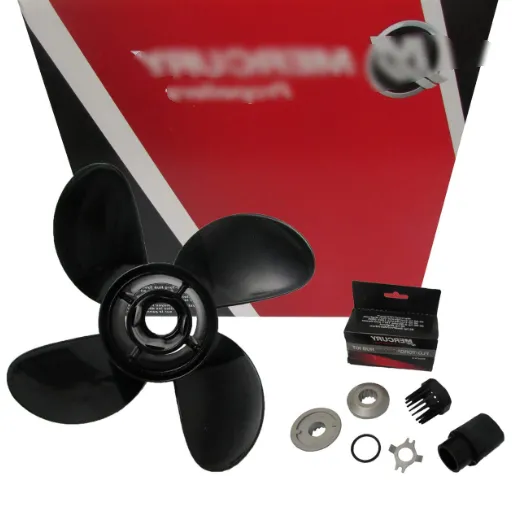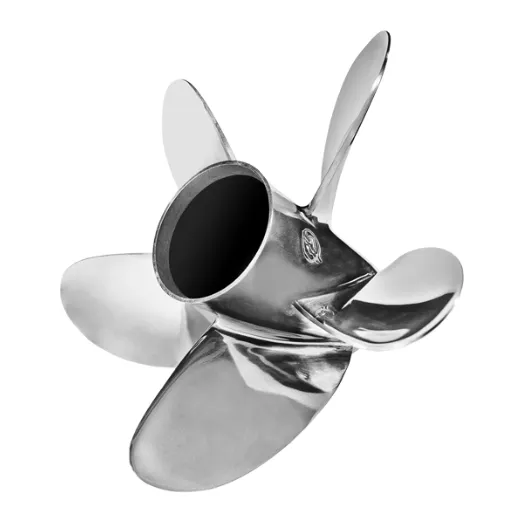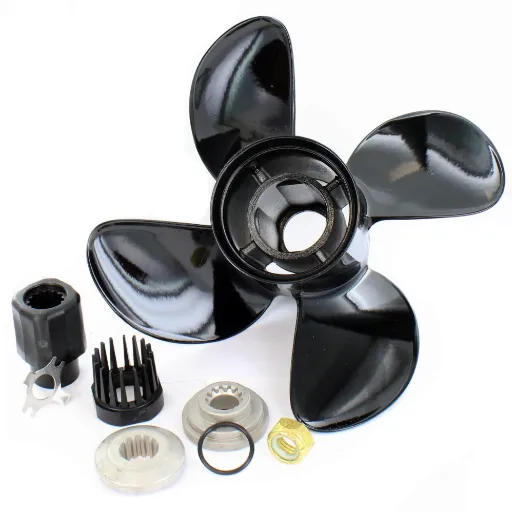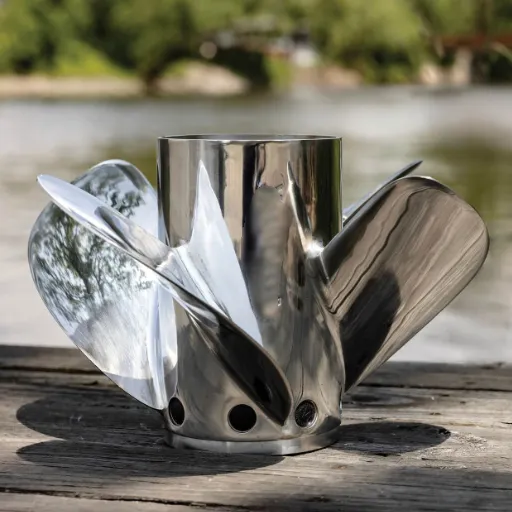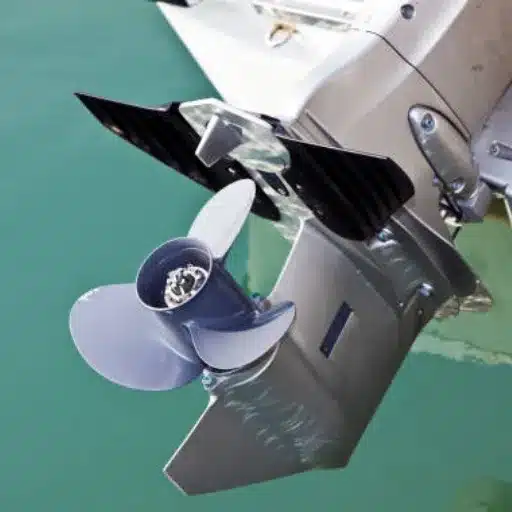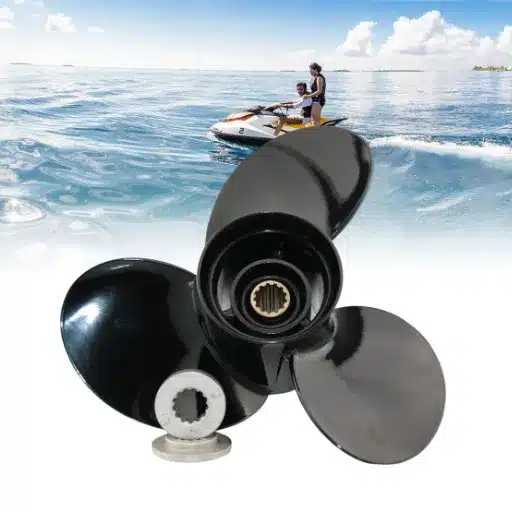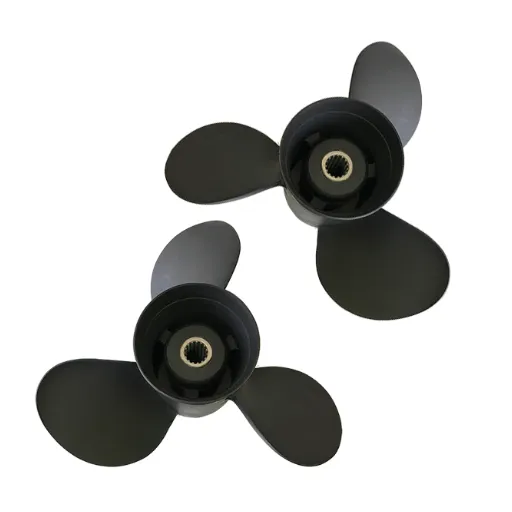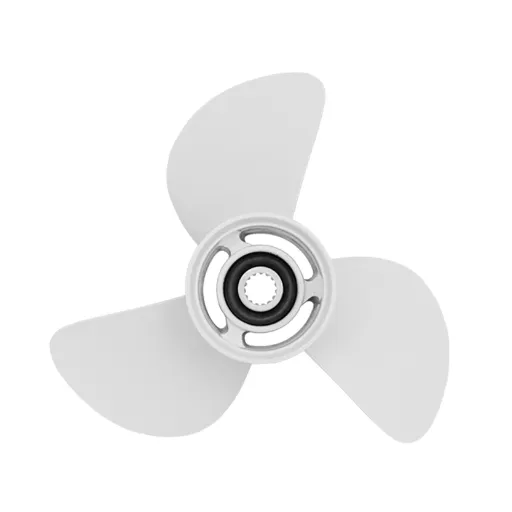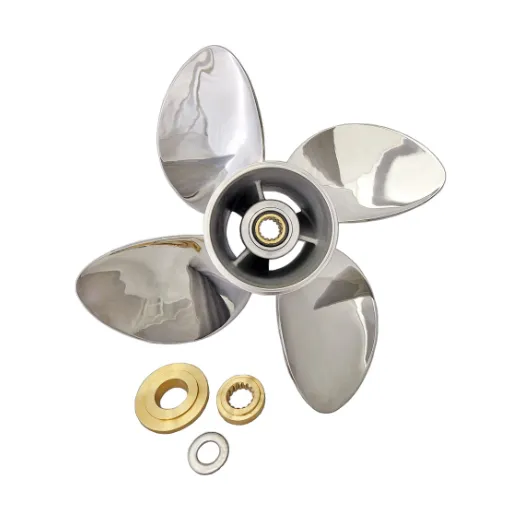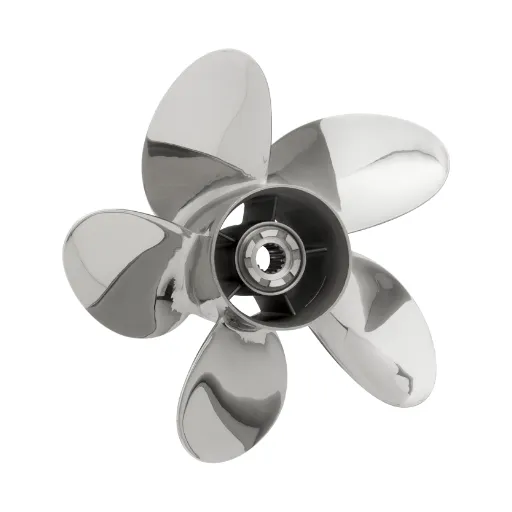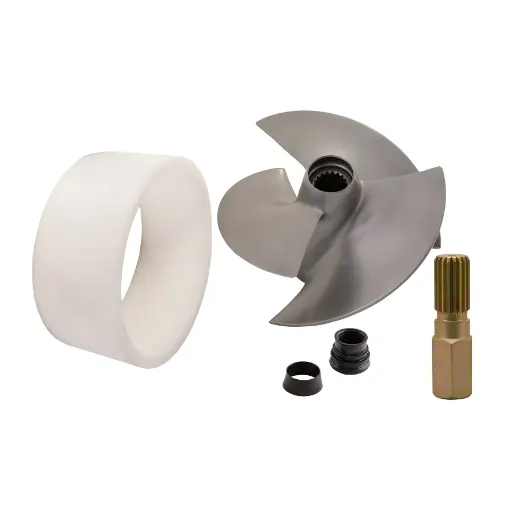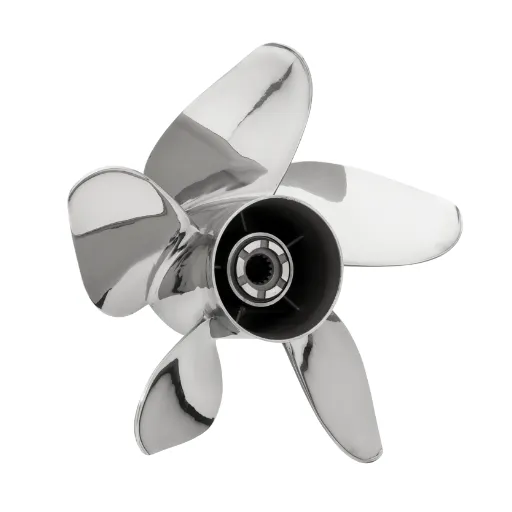Boating technology has undergone significant changes over the years, with propeller innovation playing a central role in enhancing marine performance. Mercury Propeller Technology continues to set new standards of efficiency, durability, and precision, thereby almost redefining the boating world. In 2025, a new style will emerge through innovation and engineering. The innovations of Mercury cater to another dimension of selecting today’s boater—be it optimized speed, fuel economy, or easier maneuverability. We delve into the critical features of the next-generation Mercury propellers and reveal some tangible benefits for both boating enthusiasts and professionals. From breakthrough material to superior hydrodynamics, see how these polymorphs will evolve the face of marine propulsion.
Introduction to Mercury Propellers
Overview of Mercury Marine and its Innovations
Mercury Marine, being a worldwide leader of marine propulsion systems, has largely managed to grow into a name synonymous with innovation and technological advancement in the boating industry. Mercury Marine, since 1939, has been breaking the glass ceiling of innovation for performance and technology-directed solutions, custom to both the recreational and commercial sectors. Mercury’s breakthrough technologies include four-stroke outboard engines that are highly efficient, advanced joystick steering systems, and digital controls that are among the best.
Prominent signs of glory in this respect include their proprietary ARO, or Advanced Range Optimization, technology developed to maximize fuel economy in the trickle of engine power. Likewise, with the development of corrosion-resistant alloys like their proprietary XK360 aluminum, Mercury presents a significantly longer maintenance life expectancy for its products, especially in a saltwater environment. As a company focused on reducing environmental impact, it stands to reason that their engine technologies do too, with low emissions and high performance.
Through ongoing R&D investment, Mercury Marine remains at the leading edge of marine technology, pioneering innovations in propulsion efficiency, reliability, and design with the end-user in mind, thereby forging a new definition for modern boating.
Importance of Propeller Technology in Marine Performance
Propeller technology plays a crucial role in determining a vessel’s performance in terms of speed and maneuverability. The evolution of propeller design, materials, and size is closely tied to technological advances and should be taken into account when evaluating performance. Considerations in hydrodynamics have helped provide propellers with blade geometry that offers minimal drag and maximum thrust. In high-performing propellers, stainless steel is preferred because it can withstand higher stresses in operation than the more traditional aluminum design.
Propeller pitch and diameter represent the basics of its performance characteristics. A bigger diameter offers bigger lift, especially when the vessel faces heavy weights, and a pitch means that the engine runs at its best RPM and not overloaded with the vessel speed in mind. Newer innovations, such as progressive pitch and cup drive, fuel efficiency and cavitation prevention, which protect propellers and improve vessel stability.
CFD simulations are also employed in modern times to compare alternative designs and give the finest water flow dynamics over the blade surface. These latest developments, combined with lightweight composites, enable propellers to reach the very peak of power delivery, minimizing environmental impact through improved fuel efficiency and the smoothest operation for any marine operator.
Key Features of Mercury Propellers
⚡ Advanced Hydrodynamic Efficiency
The Mercury propellers feature an optimized blade geometry that reduces drag and maximizes thrust. Computational modeling assures accurate water flow dynamics and thus increased propulsion efficiency even under adverse conditions.
🛡️ Durable Construction Materials
The application of alloys and composite materials ensures the best resistance to corrosion and wear. All materials have been carefully selected to withstand prolonged exposure to a harsh marine environment, ensuring the device remains reliable for its owner.
🌱 Fuel Efficiency and Environmental Impact
Increased propulsive efficiency means Mercury propellers use less fuel, thereby lowering operating costs and reducing carbon emissions in line with modern environmental criteria.
🔧 Customizable Designs
Mercury offers propellers for vessels of various sizes and applications. Variable pitch configurations and blade designs enable the flexibility of meeting performance requirements.
⚙️ Precision Manufacturing
With similar restrictions on vibration and smooth processes aided by state-of-the-art production techniques, Mercury propellers fulfill the strict tolerances of their operation. This means they offer high performance and exhibit a practically noiseless movement.
🌊 New In-Ventilation Technology
These propellers feature adjustable vents, allowing adjustment of acceleration and planing. Merely by their presence, these features contribute to improved handling and general performance of the vessel in variable water conditions.
🎯 A Wide Selection for Very Specialized Uses
Designed for peak performance, Mercury provides options for commercial, recreational, or racing applications. Specialized propellers for high-speed applications further enhance the product line offered by Mercury.
These features collectively establish Mercury propellers as a benchmark for reliability, efficiency, and cutting-edge marine technology.
Types of Mercury Propellers
Understanding Aluminum Vs. Stainless Steel Propellers
When comparing aluminum and steel for propellers, the key differentiators are material properties, durability, performance, and cost. Aluminum propellers are comparatively cheaper and lighter and are well-suited for lower horsepower engines or simply casual boating. Due to their lower cost, aluminum propellers are often the preferred choice of recreational boaters. However, aluminum suffers from a lack of requisite strength. Thus, under conditions of high stress, such as in shallower waters or when impacted by debris or seabed pressure, the propeller may become deformed or damaged.
In contrast, stainless steel props possess exceptional strength and resilience due to the hardness imparted to them by their raw materials. Because of this, only a very minimal flexing occurs in the blades, which imparts greater efficiency and thrust to them. The blades are slender, optimizing drag reduction, which is an advantage for start-up acceleration and can propel the aircraft to a higher speed than an aluminum propeller can achieve. They are used when accuracy and durability are required, such as in high-speed boating, handling heavy loads, or traveling long distances.
| Feature | Aluminum Propellers | Stainless Steel Propellers |
|---|---|---|
| Cost | Lower cost, budget-friendly | Higher initial investment |
| Weight | Lighter | Heavier but more durable |
| Durability | Less durable, prone to damage | Exceptional strength and resilience |
| Performance | Good for casual boating | Higher speed and acceleration |
| Best For | Recreational, lower HP engines | High-speed, heavy loads, professional use |
| Maintenance | Easier to replace when damaged | Better corrosion resistance, longer lifespan |
In addition, maintenance considerations and lifespan must be taken into account. Whatever corrosion is on the stainless steel propeller is less treated in the environment, so it lasts longer. The initial price is an advantage, while the lasting nature and good condition make it a rewarding purchase for the frequent boater or professional level of boating. Aluminum propellers, on the other hand, can be replaced soon after being damaged; therefore, this is particularly beneficial for casual boaters who want to save money.
With this, one can choose according to the specs of the motor, their working conditions, and the performance they intend to have.
The Advantages of 3-Blade and 4-Blade Designs
Generally believed to possess properties such as greater top speed and improved acceleration, fuel efficiency, 3-blade propellers have a lean drag profile that minimizes resistance, allowing for higher-speed operations and greater comfort at planing speeds. 3-blade propellers are quick and nimble due to their lighter weight and with less hydrodynamic resistance. Another filling technique that makes these types of propellers a favorite choice for pleasure boats and speed boats for the sake of speed and fuel efficiency.
Meanwhile, 4-blade propellers usually generate much thrust and stability, especially in heavy loading or rough-water conditions. In other words, the distance between the blade and the 3-blade increases contact in water, reducing all slippage and improving grip. Thus, the design might perform best when the use needs a steady performance, such as towing, fishing, or handling under challenging circumstances. Additionally, 4-blade propellers offer better performance for hole shots, making them well-suited for water sports. They also offer superior maneuvering capabilities at low speed. They sacrifice some high-end speed to give better performance in the mid-range, reduce vibrations, and provide smoother operational characteristics.
3-Blade Propellers
- ✓ Greater top speed
- ✓ Better fuel efficiency
- ✓ Lighter weight
- ✓ Less hydrodynamic resistance
- ✓ Ideal for speed boats
4-Blade Propellers
- ✓ Greater thrust and stability
- ✓ Better grip and reduced slippage
- ✓ Excellent for towing and fishing
- ✓ Superior low-speed maneuvering
- ✓ Reduced vibrations
Generally, the operational use of a vessel, engine power, and the appropriate characteristics of performance determine the propeller size and number. A careful consideration of these design advantages will ensure that the boater selects the prop that best exemplifies efficiency and function.
Dive Deeper into the Enertia and Fury Series
The Enertia and Fury propeller series rank among the finest options available today in the enhancement of marine propulsion. The Enertia Series, crafted from the revolutionary X7 alloy, is the new face on the block, with a design language that denotes higher strength and durability than ordinary stainless steel propellers. The design is intended for heavy-duty applications, offering strong acceleration and top-end speed while maintaining optimal fuel efficiency. Enertia’s design is suitable for vessels that demand reliable performance under higher loads or in harsh water conditions, therefore gaining preference from fishing and recreational powerboats.
The Fury Series propellers, in return, focus on unmatched speed and lift forces, utilizing exacting blade geometry that favors hole-shot and mid-range acceleration at the expense of top-end speeds. Being bass-boat-oriented, the Fury Series benefits from advanced materials and hydrodynamic profiles that reduce cavitation and enhance handling during aggressive turns and rapid acceleration. According to customers, Fury propellers seem to boost almost all metrics of performance, from improved fuel economy to reduced RPM variance.
Enertia vs. Fury Series Comparison
Enertia Series
Material: Revolutionary X7 alloy
Focus: Heavy-duty applications
Strengths: Durability, fuel efficiency
Best For: Fishing, recreational powerboats
Fury Series
Material: Advanced alloys
Focus: Speed and lift forces
Strengths: Hole-shot, acceleration
Best For: Bass boats, high-performance
Combined, the two series serve distinct purposes, with the Enertia Series designed for rugged dependability in demanding workloads and the Fury Series optimized for high-performance, speed-critical applications. Based on hull design, engine specifications, and intended usage, the boat owner can select the best propeller series for their individual marine needs.
Performance Benefits of Choosing Mercury Propellers
Better Fuel Economy and Speed
Mercury propellers, contrary to many other propellers, are designed with practically equal concerns toward speed and fuel economy. Utilizing advanced hydrodynamic designs and alloy compositions, these propellers have been engineered to minimize drag and maximize thrust, enabling engines to operate more efficiently while consuming less fuel. Test reports confirm that Mercury’s proprietary blade geometry induces less turbulence and produces forward thrust more efficiently than standard competitors’ designs. For example, the Fury Series can achieve up to 25% faster acceleration in performance-biased applications, whereas the Enertia Series can improve fuel economy by approximately 10 to 15% under heavy load. Mercury sets standards in marine performance through this dual emphasis on speed and power conservation.
📊 Performance Statistics
- • Fury Series: Up to 25% faster acceleration
- • Enertia Series: 10-15% improved fuel economy under heavy load
Enhanced Handling and Maneuverability
Mercury’s cutting-edge designs incorporate hydrodynamic engineering principles and precision control systems to deliver the best handling and maneuvering qualities for all types of water bodies. Adaptive trim controls and dynamic steering systems, for example, enable operators to adjust the actual performance of the vessel according to its speed, water state, and load distribution. In certain situations, the incorporation of digital control modules provides additional management of steering dynamics, reducing driver exertion and enhancing vehicle stability in sharper turns or harsher weather conditions. Furthermore, the hull and propeller designs have been considered to minimize drag forces, allowing vessels to maintain the correct trajectory and respond judiciously even at high speeds. From this phase, they set another landmark for marine agility and control.
Durability and Longevity of Mercury Marine Propellers
Since Mercury Marine propellers are subjected to more demanding conditions from the marine environment, they are considered highly durable. These propellers are made from stainless steel, proprietary alloys, and other materials to resist corrosion from saltwater and from all other aggressive marine environments. This is made possible by their advanced manufacturing techniques in areas such as precision casting and CNC machining, which reduce any structural discontinuities that may have an adverse influence on strength.
Laboratory testing coupled with field data consistently demonstrates that these are capable of withstanding continuous mechanical stress of severe degrees, such as impacts with underwater debris and high-torque outputs from modern high-horsepower engines. Wear-resistant coatings and designs minimize cavitation damage, extending inspection and maintenance intervals. Reduced operational downtime and lower long-term maintenance costs make Mercury Marine propellers a reliable choice for vessels, whether recreational or commercial.
Trends in Propeller Technology for 2025
Integration of Eco-Friendly Design like Enertia Eco
The Enertia Eco Series exemplifies frontier innovation in environmentally friendly propulsion technology. Fastidiously designed, these propellers are made to accommodate fuel efficiency but ensure thrust performance-who could ever think of compromising either of these elements! They utilize more advanced materials, such as stainless-steel alloys with increased resistance to corrosion, thereby reducing the environmental impact by extending the propeller’s life and minimizing material waste. Simultaneously, such designs appear to utilize hydrodynamic modeling to reduce drag and enhance water flow, ultimately resulting in quantifiable savings in fuel consumption and emissions.
The manufacturers using green propeller technology thus respond to the clamour for sustainability within the marine setting while also affording environmental regulatory compliance in a manner that presently involves stringent environmental laws. These developments adopt a brighter green approach for sustainable marine use and may imply enhanced durability and reliability for both casual and rigorous applications. The Enertia Eco series and other similar products will set the trend for the future of sustainable marine propulsion systems.
Smart Technology and Propeller Performance Monitoring
Technology has now changed the way propeller performance is measured; it gives accurate data and advanced diagnostics to improve operation efficiency. By attaching sensors and IoT-enabled systems to modern propellers, operators can obtain real-time information about various performance parameters, including thrust efficiency, blade wear, and vibration levels. These systems apply sophisticated algorithms to analyze data records, allowing potential problems to be recognized before they exacerbate, thereby minimizing the costs associated with maintenance or downtime. Furthermore, predictive analytics models are increasing in frequency and usage, thereby having considerable weight in enabling an operator to decide upon optimized consumption of fuel or any other matter toward improvements in general functionality. Thus, this innovative technology integration is advantageous for ensuring peak marine operational performance that conforms to increasingly stringent environmental and efficiency standards.
🔬 Smart Monitoring Capabilities
- 💡 Real-time thrust efficiency monitoring
- 💡 Blade wear detection and alerts
- 💡 Vibration level analysis
- 💡 Predictive maintenance scheduling
- 💡 Fuel consumption optimization
Further Enhancement of Marine Propeller Engineering
The subsequent wave of developments in marine propeller technology is focused heavily on sustainable materials, their advanced manufacture, and CFD simulations. The composite materials that could be introduced may primarily offer weight reduction, higher corrosion resistance, and longer service life compared to the metals, such as stainless steel, that have been hitherto used. Thus, apart from increasing operational efficiency, these materials also contribute to reducing greenhouse gas emissions and, consequently, global decarbonization.
Additive manufacturing technology, also known as 3D printing, is another truly innovative technology that enables the production of complex, geometric propellers with precision that was previously unachievable with traditional methods. This method allows for rapid prototyping and optimization of blade profiles for maximum hydrodynamic performance. Moreover, propellers fitted with adaptive pitch systems are being developed to enable blade angle adjustments according to changing loads and speeds, thereby maintaining the optimal thrust and fuel efficiency at all times.
Due to developments in CFD and ongoing advancements, engineers at Gashare now simulate and refine propeller designs with real-world considerations, including cavitation, wake flow, and characterization. Such simulation techniques consider noise reduction, energy efficiency, vibration, and comfort on board as key concerns —a feature that also causes less harm to marine life. These technological developments collectively demonstrate the design industry’s commitment to developing environmentally friendly solutions with optimal performance.
Choosing the Right Mercury Propeller for Your Needs
Factors to Consider While Selecting a Propeller
1. Material Composition
The propeller materials have extremely vital roles in their constructive aspects of performance and durability. Aluminum propellers are lightweight, economical, and suitable for small boats with moderate power application needs. The stainless-steel propellers, however, offer significantly better performance and durability because they resist flexing under high stress. These are better choices for boats engaged in high-speed and high-torque applications.
2. Pitch and Diameter Specifications
These are standard and important parameters, as they measure thrust and efficiency. The pitch of the propeller is the number of feet it would normally move forward in one revolution in an ideal situation, without any slippage. A propeller with a higher pitch can allow your boat to go faster, but with less acceleration. In comparison, a propeller with a lower pitch would give you more on-the-water speed at low ranges, greater maneuverability, and towing capacity. You must employ the right combination of pitch and diameter, proportional to the power of your engine and load requirements, to achieve the best results in terms of optimum propulsion and fuel efficiency.
3. Blade Count and Design
The number of blades and their design significantly impact both performance and vibrations. Three blades are commonly used for high-speed and fuel-efficient applications, while four and five blades offer better stability, quieter operation, and an improved feel under heavy loads. Additionally, advanced blade geometries and cup designs will further enhance grip and reduce cavitation, particularly in high-performance or water sports applications.
4. Engine Compatibility
The biggest goal of a propeller is to operate balanced with the boat engine on which it is mounted. The horsepower of the engine, the gear ratio, the mounting height of the drive, and other factors affect the propeller’s efficiency. Accepting the recommendations of the manufacturers or going through very detailed specifications for your boat-engine application allows you to make that final tune.
5. Operating Conditions
The general conditions: The working environment is the basis of the propeller selection. For example, a shallow water scenario requires propellers that can resist the damage caused by debris and possible ground strikes. Marine work in saltwater requires materials that resist corrosion. The activity of towing and cruising toward fishing will change the pitch preferences between standard and high thrust.
These considerations represent the fundamental bases for selecting a propeller that suits your application, ensuring the best performance and reliability in actual marine situations.
How to Measure Diameter and Pitch for Effective Performance?
The first step is to check the diameter of the propeller. Diameter is measured by tracing a circle with the tips of the blades during rotation. To obtain this, one measures from the center of the propeller hub to the tip of a blade and doubles the distance. Exact measurement is taken with a precision measuring device, like calipers, to note the accuracy from possible minor defects that would affect the propeller’s functioning. The diameter is of utmost importance when balancing power to the engine and the size of the boat, as an imbalance may cause loss of efficiency or undue stress on the system.
Following this, the pitch is done, which is the distance a propeller would theoretically move forward in one full single rotation, during which it would slip. Usually, pitch is provided by manufacturers. If I want to check or ascertain it, I use propeller pitch blocks or refer to a manufacturer’s document for standard specifications. The pitch I choose must correspond to the intended use of the boat; that is, a low pitch provides good torque and acceleration, while a high pitch yields good top-end speed. These must be balanced with the engine’s RPM range, such that neither underloading nor overloading occurs, thereby causing inefficiency or damage.
Finally, I will combine my measurements with complexity from manufacturers’ instructions, thereby ensuring compatibility with optimization. Ensuring regular inspection and measurement of these parameters helps maintain peak operating conditions and further ensures a healthy lifespan for both the propeller and the engine. Systematic approaches like these enable me to deliver optimal performance in marine applications.
Keep in Mind When Interacting with Dealers for Custom Solutions
Specific operational requirements or improved output necessitate consulting dealers, who remain a crucial component in the selection and customization process. I rely on their particular expertise to provide tailor-made solutions to peculiar challenges. Most dealers often have access to comprehensive databases, manufacturers’ insights, and the latest developments in propeller and engine technologies; hence, they may be able to provide highly tailored recommendations relevant to my operational requirements, including load rating, optimal fuel consumption, and the type of vessel.
During the consultation, the owner details the specifications of his boat and its usage patterns, along with any issues that might affect performance. From this information, the dealer can determine the problem correctly, generally aided by specific tools, or, if computer modeling is an option, advanced hydrodynamic calculations can be used. Then, with the assessment of the different alternatives, modifications or replacements will be ensured not to conflict with the owner’s requests and recognized standards in the industry.
Additionally, dealers serve as a primary source for custom components that may not be readily available off the shelf. Propeller designs might be optimized to maximize thrust, or you may have specific materials for extra durability against extreme or corrosive environments. Once again, I ensure that all solutions are designed and tested to the highest standards by trusted professionals, as this guarantees performance, reliability in operation, and long-term savings for the clients. In brief, this expertise aligns perfectly with my rigorous maintenance and performance improvement practices.
Reference Sources
- Press Release – Mercury Racing Launches New Altitude Propeller at 2025 Miami International Boat Show: Highlights the launch of the Altitude propeller, featuring advanced CNC-machined technology.
- Mercury Racing Propellers Overview: This document provides details on Mercury Racing propellers, including Pro and Lab Finishes, for enhanced performance.
- Brunswick – Mercury Marine Sets Record at 2025 Venice Boat Show: Discusses Mercury Marine’s breakthrough technologies, including innovations in propeller design.
- Find more info now.
Frequently Asked Questions (FAQs)
❓ What Mercury prop will work for my boat with all the correct specifications?
The right Mercury propeller should be fit for the type of hull of your boat, the horsepower of the engines, and the use of the ship. If performance is in question, Bravo One and Bravo Three propellers may be the best choice, as they have a reputation for good speed and handling. Spitfire propellers, however, would best serve any fishing boat equipped with Mercury outboards in terms of acceleration and fuel economy. Before deciding on any one propeller, consult a technician or your dealer to determine which one is best suited to your specific needs.
❓ How do I install a Mercury prop hub?
Beautiful precision-mechanics concept and tools in action for the Mercury hub installation. The correct hub kit (such as the Flo-Torq II hub kit, which is compatible with this particular propeller) must be used. Remove the old prop and clean the prop shaft. Follow all instructions supplied with the hub kit for proper installation, ensuring the propeller is fastened tightly so it does not cause problems during operation. If you’re unsure, it’s best to hire a professional technician for the installation.
❓ What are the advantages of an aluminum Mercury prop?
The Mercury Aluminum prop offers a trade-off between quality and price—and in doing so, it stands a chance in the recreational market. They weigh very little, yet provide good acceleration and handling, which is beneficial for outboards and sterndrives. Aluminum is slightly more forgiving when it comes to damage: a critical consideration for the average angler or rough-water navigator. An aluminum prop would be a good choice for runabout and cruiser owners wishing to save on fuel and maintenance.
❓ What makes Mercury Fury and Mercury Enertia different?
Mercury Fury and Enertia props are designed for different performance requirements. The Fury prop, with its aggressive design, works well in high-speed applications, providing improved acceleration and top speed. Enertia propliers, especially the Enertia Eco, are all about saving fuel for cruising and recreational boating. Both props come in various diameters and pitch sizes, so selecting which one to go for would largely depend on what your boat really needs in terms of performance.
❓ Are Mercury propellers fine to be fitted on a Mariner outboard?
With similar technologies and engineering standards shared by these two manufacturers, many Mercury propellers are compatible with Mariner outboards; thus, you can select from high-performance options, such as the Bravo series or the X7 prop, to enhance the speed and handling of your outboard. A propeller’s specifications must meet those of the Mariner outboard, that is, pitch, diameter, etc. The local dealer should be able to recommend the best setup for you.
❓ How do I maintain my Mercury propeller for optimal performance?
One should always care for a Mercury propeller to ensure it performs well and lasts a long time. Inspecting your prop for damage, such as dings or bends, should be a regular activity that affects the speed and handling. Cleaning the propeller after every use, particularly after exposure to saltwater, will help prevent corrosion. Lubricate the propeller hub as well, and monitor the alignment between the propeller and the engine for optimal efficiency. If you are ever unsure of any maintenance procedure, consult the manual or seek assistance from a technician.




